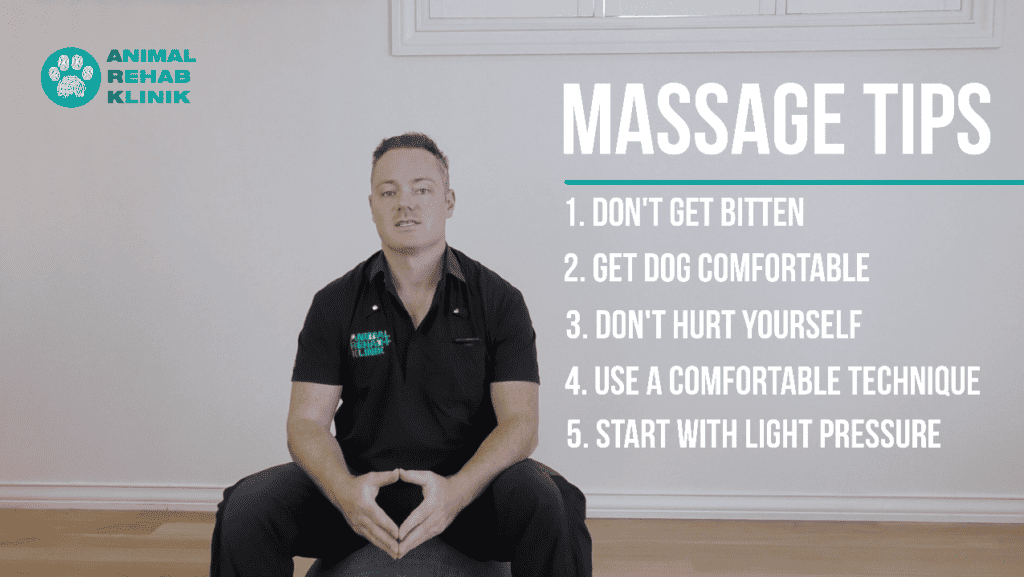
There are a few places there it’s not safe to massage due to the proximity of blood vessels and nerves.This is typically on the inside of joints such as up onside the shoulder or hip or in the bend of the elbows or knees.
The other key place you won’t want to massage is the front half of the neck, particularly the lower part.
You also don’t want to massage over bones. There’s not safety issue as such, it’s just not very comfortable and there’s no muscle there.
You may have heard ‘always massage towards the heart’ or something similar. It might sound good in theory to help push the blood along back to the heart for it to become re-oxygenated, but in reality it’s not that important because the change in circulation is so small it’s insignificant. It’s well documented that the circulation boost from exercising dwarfs any circulation benefit from massaging. This also works the other way – with such a small change in circulation from massaging, you won’t cause any issues massaging the opposite direction.
If you want to know more on this topic, here’s a great article on why massaging doesn’t increase circulation in a clinically important way.
There are some exceptions, such as peripheral oedema or cellulitis where a limb is so swollen, that it probably is a better idea to try to help that blood flow out of the limb rather than force it back down, but this it outside the scope of what we’re doing here, and should be treated under the guidance of a professional.
So, in summary, in most dogs, massage in whatever direction feels best.
If you’re still unsure, try practising on yourself first. Make sure what you’re doing feels right and not uncomfortable. If you’ve never had a massage yourself, this might be difficult to assess if you’re doing the right thing, so practise on a family member or friend who is familiar with massage.
The neck is also known as the cervical spine. To massage this area, support the chin, and massage either side of the spine going from the shoulder up to the base of the skull.
Use: Fingertips or your thumbs work well for most dogs. On bigger dogs you can use your fist.
Avoid: Don’t massage over the bony bits of the spine in the centre, and don’t venture too far around to the sides or front of the neck where there are a lot of blood vessels and nerves.
The upper back (thoracic spine) is the region of the spine where the ribs attach. Similar to the neck, the muscles travel along either side of the spine.
Use: Fingertips
Avoid: Bony bits in the centre of the spine, and over shoulder blades (scapula)
The lower back (lumbar spine) is the area between the thoracic spine where the ribs stop, and the pelvis. There are lots of muscles here to massage and not too many things to watch out for.
Use: Fingertips, thumb, palm, fist.
Avoid: – Bony bits in the centre of the spine & over pelvis.
This runs down from the shoulder to the elbow on the front of the forelimb, slightly to the inside.
Use: Fingertips, base of index finger, thumb
Avoid: Too far around the inside of the forearm, and in the bend of the elbow where there are blood vessels & nerves.
This runs down from the shoulder to the elbow on the back for the forelimb.
Use: Fingertips, base of index finger, thumb, fist.
Avoid: N/A
This covers the outside of the shoulder blade, going from the top of the shoulder blade, down to the elbow.
Use: Fingertips, thumbs
Avoid: There’s a lot of bone around the shoulder blade, stick to the muscly bits.
The pectoral muscle covers the chest, going from the centre of the sternum to the shoulder.
Use: Fingers, pincer grip, fist
Avoid: Don’t go too deep in around the shoulder, and don’t go into the armpit as you could run in to a network of blood vessels & nerves.
The quad goes down the front of the hindleg, from the hip to the knee (stifle).
Use: Fingertips, fist, base of index finger, palm
Avoid: Inside of the leg or hip – blood vessels & nerves
The hammy goes down the rear of the hindleg, from the hip to the knee (stifle).
Use: Fingertips, fist, base of index finger, palm
Avoid: Inside of the leg or hip – blood vessels & nerves
The gluteal/glute muscles cover the outside of the hip. In the centre of the hip you’ll find a bony protuberance (greater trochanter) which is at the top of the leg – the glute muscles fan out from here around the top to attach to the pelvis.
Use: Thumbs, fingertips
Avoid: Bony bits